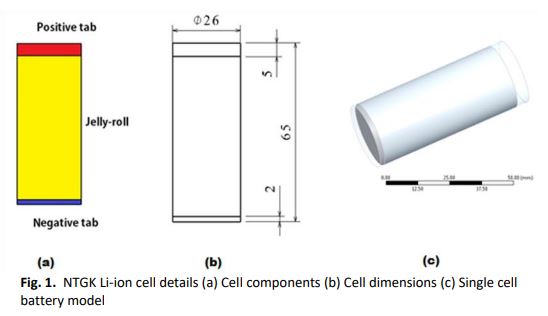Computational Design and Analysis of a Novel Battery Thermal Management System of a Single 26650 Li-Ion Battery Cell for Electric Vehicle Application
DOI:
https://doi.org/10.37934/arfmts.93.2.6175Keywords:
Lithium-ion, Electric Vehicle, Battery Thermal Management System, Single cellAbstract
The adverse climate change has posed an emergency for the world to shift to green energy systems. The largest contributor for air pollution, which is the primary cause for the adverse climate change is the fossil fuel driven conventional vehicles. Therefore, electric vehicles are going to be the future of the automotive industry. Due to the abundancy of lithium mineral and high-power density characteristics, lithium-ion powered electric vehicles are prominent choice. Similar to the vehicles driven by internal combustion engines, the electric vehicles should be able to travel long distances while carrying significantly heavy loads. This requires the battery to operate continuously for long duration under heavy loads, which results in increase of battery temperatures beyond the normal operating range. High battery temperature will degrade its performance and subsequently deteriorate battery life. Therefore, it is important to ensure that the battery temperature lies well within normal range for all possible operating conditions of the electric vehicle. This can be achieved by adopting a suitable Battery Thermal Management System (BTMS). In the present study, computational analysis of a single Lithium-ion (LiCoO2 26650) cell designed based on Newman, Tiedemann, Gu and Kim (NTGK) formulation has been carried out to evaluate the maximum temperature attained by the cell. Furthermore, a BTMS is designed for the same using a novel liquid cooling plate (containing three channels) which is in contact with the cell surface. The maximum temperature attained by the cell with BTMS at different discharge rates of 0.5 C, 1.0 C and 1.5 C is determined. To enhance cooling, two fins are attached on top of the liquid cooling plate. Water is used as coolant and analysis is carried out for 0.01 m3/s flow rate. The maximum temperatures attained by the cell with and without BTMS are found to be is 313.72 K, 307.37 K, 302.31 K and 298.55 K, 298.52 K, 297.41 K at discharge rates of 1.5 C, 1.0 C and 0.5 C. Therefore, with BTMS the maximum cell temperature attained is 39%, 25% and 16% less compared to the bare cell, which indicates that the BTMS adopted in the present work is significantly effective in controlling rise in maximum cell temperature.
Downloads
































